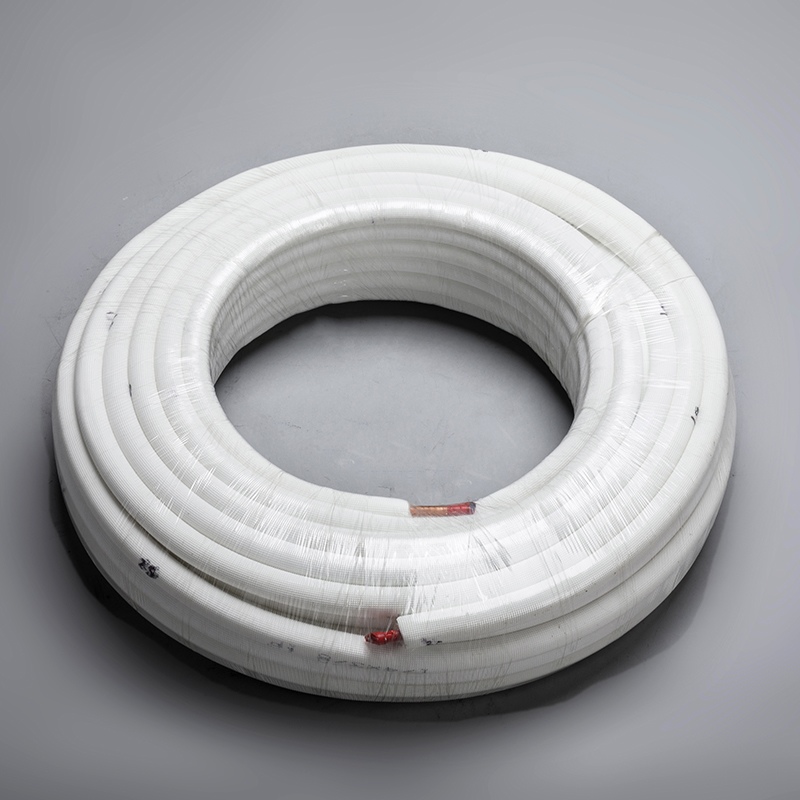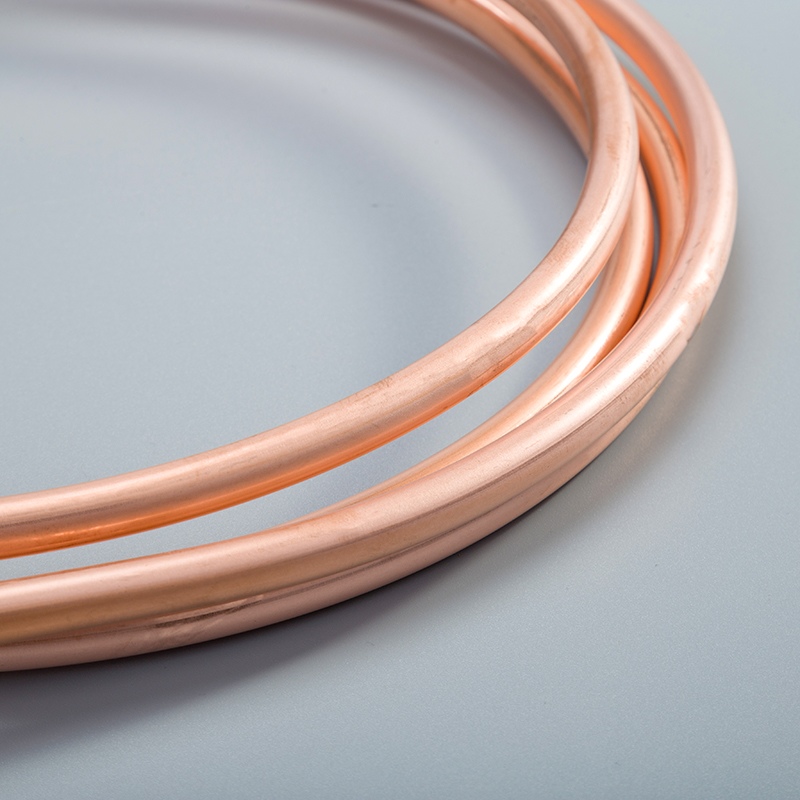Insulation Secrets: Boost Your Air Conditioner Efficiency with Copper Pipes

Enhancing air conditioner efficiency is crucial for optimal performance. Insulating air conditioner connecting insulation copper pipe plays a key role in this process. By understanding the benefits and methods of insulating these pipes, individuals can significantly improve their air conditioning systems. This practice not only boosts energy efficiency but also prevents condensation issues. Exploring the advantages and techniques of air conditioner connecting insulation copper pipe can lead to a more effective cooling experience.
Benefits of Insulating Copper Pipes
Energy Efficiency
Reduced Energy Consumption
Insulating copper pipes in air conditioning systems leads to a decrease in the amount of energy consumed. By preventing heat loss or gain, the system operates more efficiently, requiring less power to maintain the desired temperature.
Improved Cooling Performance
Proper insulation on copper pipes enhances the overall cooling performance of the air conditioning system. It helps in maintaining consistent cooling levels by ensuring that the refrigerant flows through the pipes at optimal temperatures.
Prevention of Condensation
Avoiding Pipe Sweating
Insulating copper pipes helps prevent pipe sweating, which occurs when warm, humid air comes into contact with cold surfaces. This can lead to moisture buildup and potential damage. Proper insulation mitigates this issue effectively.
Preventing Water Damage
By insulating copper pipes, individuals can avoid potential water damage caused by condensation. The insulation acts as a barrier, preventing moisture from accumulating on the pipes and causing structural harm over time.
Durability and Noise Reduction
Protection from Corrosion
Insulated copper pipes are shielded from corrosion, extending their lifespan and durability. The insulation serves as a protective layer against external elements that could cause deterioration, ensuring long-term functionality.
Noise Level Reduction
Insulation on air conditioning copper pipes not only improves efficiency but also reduces noise levels during operation. This is beneficial for maintaining a quiet and comfortable indoor environment while the air conditioning system is running smoothly.
Methods of Insulating Copper Pipes

Types of Insulation Materials
Foam Insulation
Installing Foam Insulation on copper pipes is a practical choice for enhancing energy efficiency. This material, such as the Closed-Cell Polyethylene Hot Water Pipe Insulation, offers improved thermal efficiency by reducing heat loss and preventing sweating. Its flexibility and ease of installation make it a popular option for both residential and commercial applications.
Rubber Insulation
Another effective option for insulating copper pipes is Rubber Insulation. Consider products like the Copper-Core Insulation System, known for its lightweight design and energy-efficient properties. The integral grooved bronze coupling with high-temperature heat-resistant rubber 'O' rings ensures durability and non-corrosive characteristics, maintaining high flow rate capabilities.
Installation Process
Measuring and Cutting Insulation
When preparing to insulate copper pipes, accuracy is key. Start by Measuring the required length of insulation to ensure a proper fit. Cutting the material precisely guarantees seamless coverage along the pipes, maximizing thermal efficiency and preventing condensation issues effectively.
Securing Insulation on Pipes
Properly securing insulation on copper pipes is essential for long-term performance. Utilize durable materials like heavy wall PVC or HDPE casing to Secure the insulation effectively. Additionally, ensure that heat-resistant end seals are in place to keep the insulation dry and maintain optimal thermal conductivity.
Air Conditioner Connecting Insulation Copper Pipe
Ensuring Proper Fit
Achieving a Proper Fit when insulating air conditioner connecting copper pipes is crucial for optimal system performance. Choose insulation materials that provide a snug fit around the pipes, minimizing heat loss and condensation risks effectively.
Sealing Joints
To prevent air leaks and maintain insulation integrity, focus on Sealing Joints securely. Use appropriate sealing techniques to create a barrier against external elements, ensuring that the copper pipes remain well-insulated for enhanced energy efficiency.
Maintenance Tips for Insulated Copper Pipes
Regular Inspection
Regularly inspecting insulated copper pipes is essential to maintain their efficiency and longevity. Start by visually checking for damage along the entire length of the pipes. Look for any signs of wear, tear, or corrosion that could compromise the insulation's effectiveness. Ensure that there are no exposed areas that may lead to energy loss or potential leaks. By identifying and addressing any issues promptly, individuals can prevent further damage and ensure optimal performance.
To maintain the integrity of insulation, conduct thorough inspections to verify that the insulating material is intact and properly secured. Check for any gaps, tears, or loose sections that could expose the copper pipes. It is crucial to address these issues immediately to prevent heat loss, condensation problems, or reduced energy efficiency. By ensuring that the insulation remains in good condition, individuals can maximize the benefits of insulating their copper pipes.
Cleaning and Repair
When it comes to cleaning insulated pipes, use a soft cloth or brush to remove any dust or debris that may have accumulated on the surface. Avoid using harsh chemicals or abrasive materials that could damage the insulation. Regular cleaning helps maintain the efficiency of the insulation and ensures proper airflow around the pipes.
In case of damaged insulation, prompt repair is necessary to prevent further issues. Begin by identifying the damaged area and carefully removing the old insulation material. Replace it with a new piece of insulation, ensuring a snug fit around the copper pipe. Secure the new insulation properly to guarantee effective coverage and protection against external elements.
Recapping the benefits and methods of insulating air conditioner connecting insulation copper pipes reveals a significant impact on energy efficiency. Regular maintenance is crucial to ensure longevity and optimal performance. By implementing insulation, individuals can experience improved cooling performance and prevent potential water damage. The testimonials emphasize the value of insulating copper pipes, showcasing quicker access to hot water and reduced wastage. Encouraging the adoption of insulation for better efficiency is key to enhancing overall air conditioning system functionality.
See Also
Insights on Why Copper Piping Outperforms PVC Environmentally
Advantages of Twin Copper Pipe Coils with White PE Insulation


